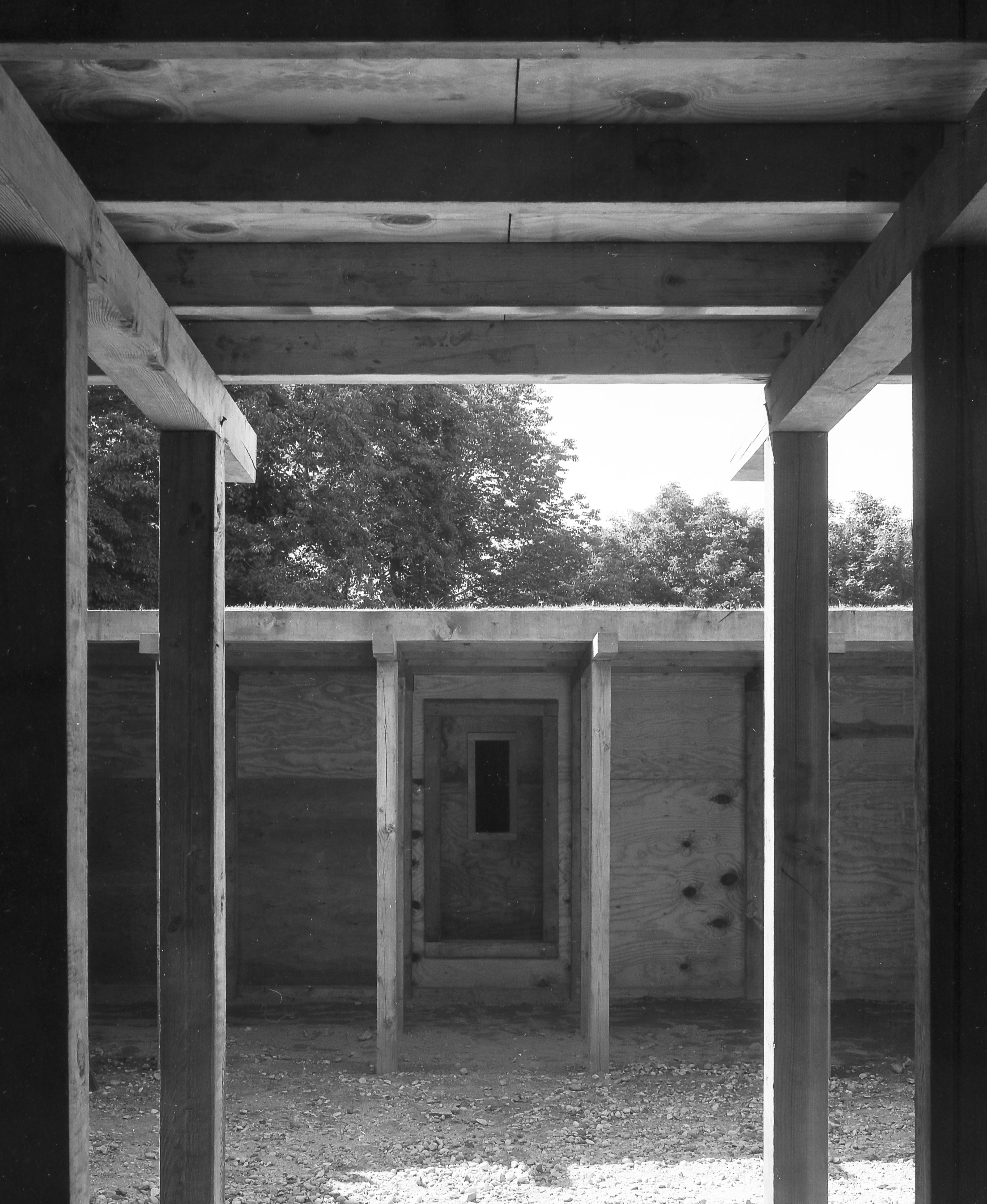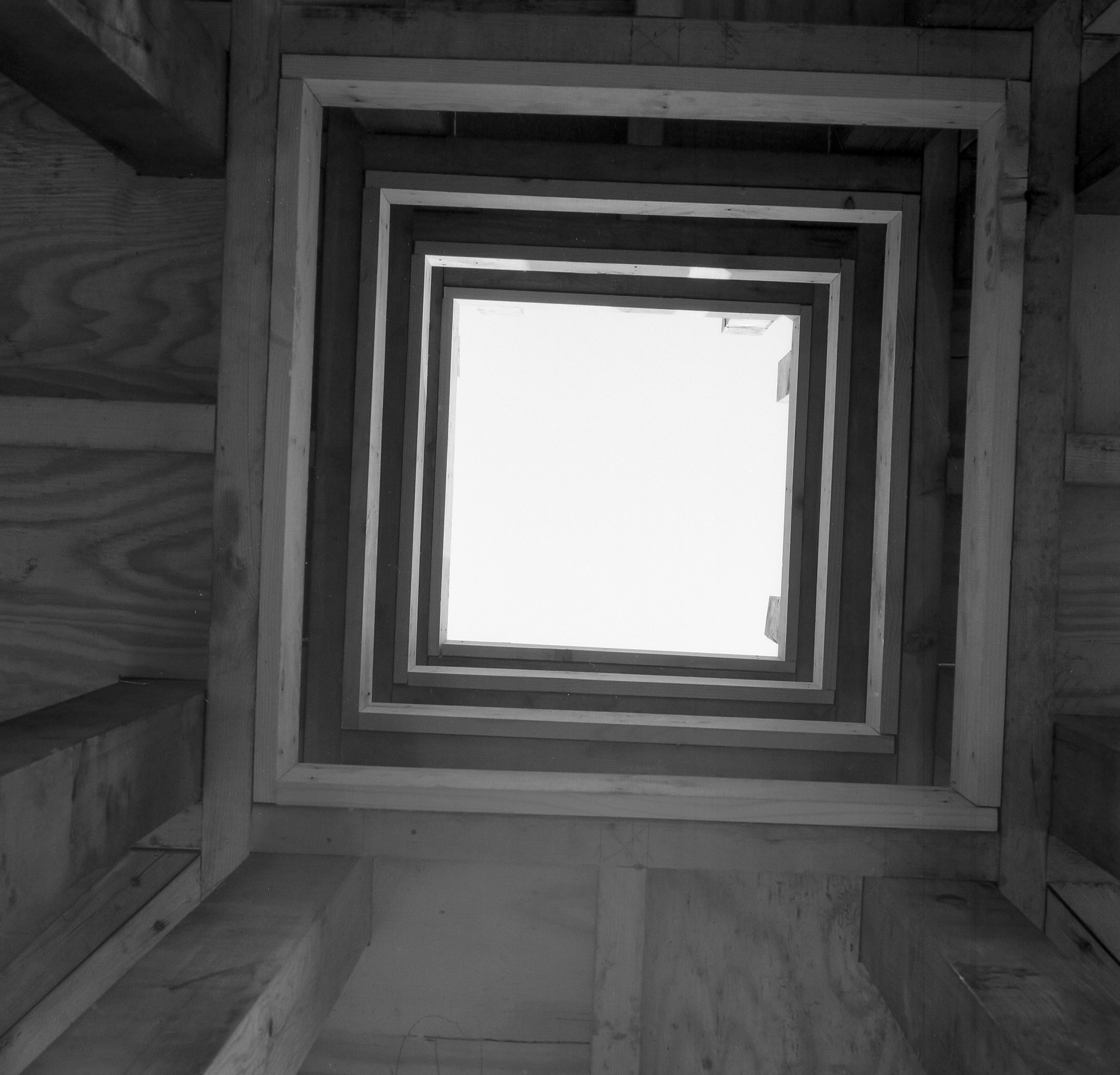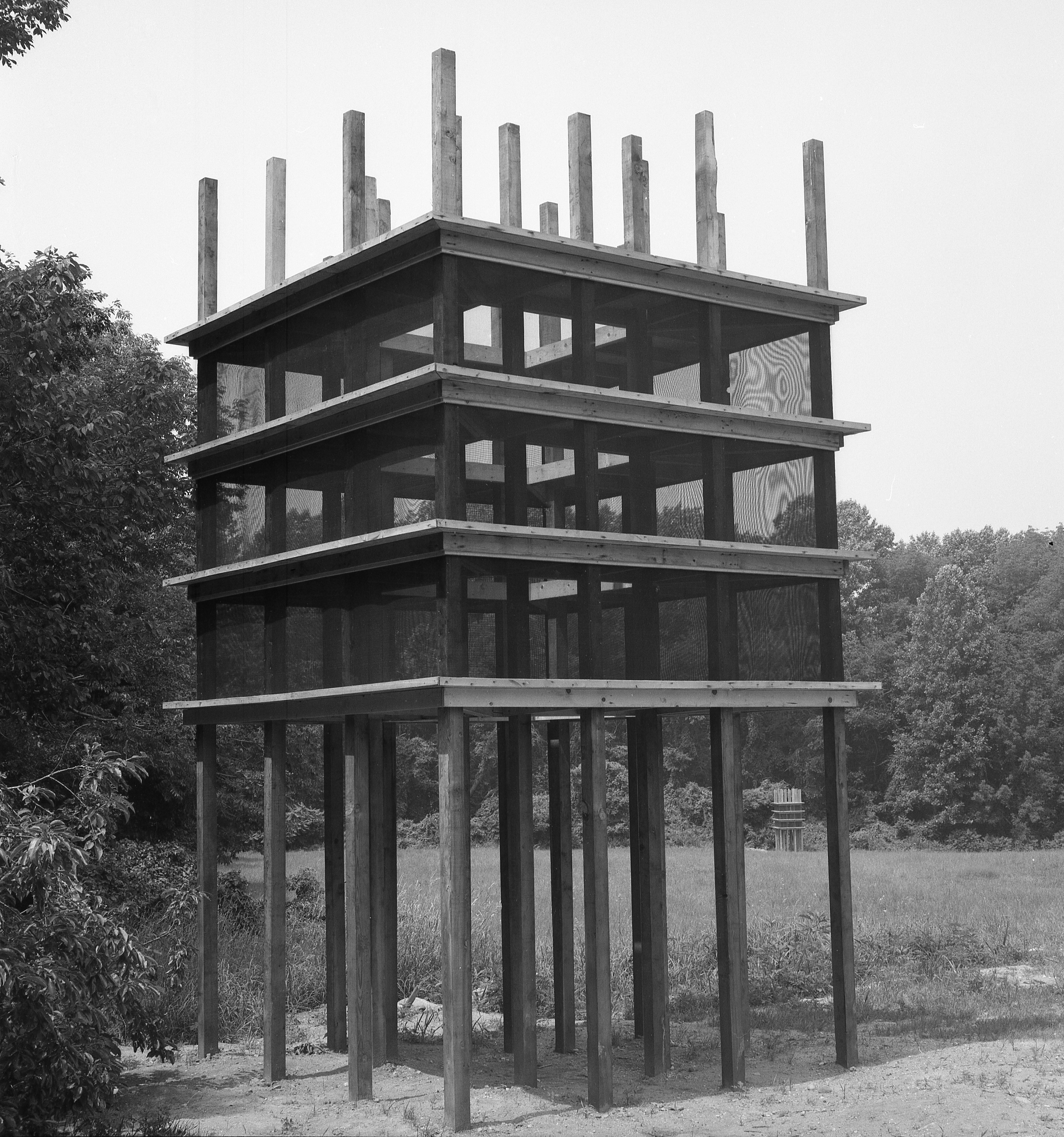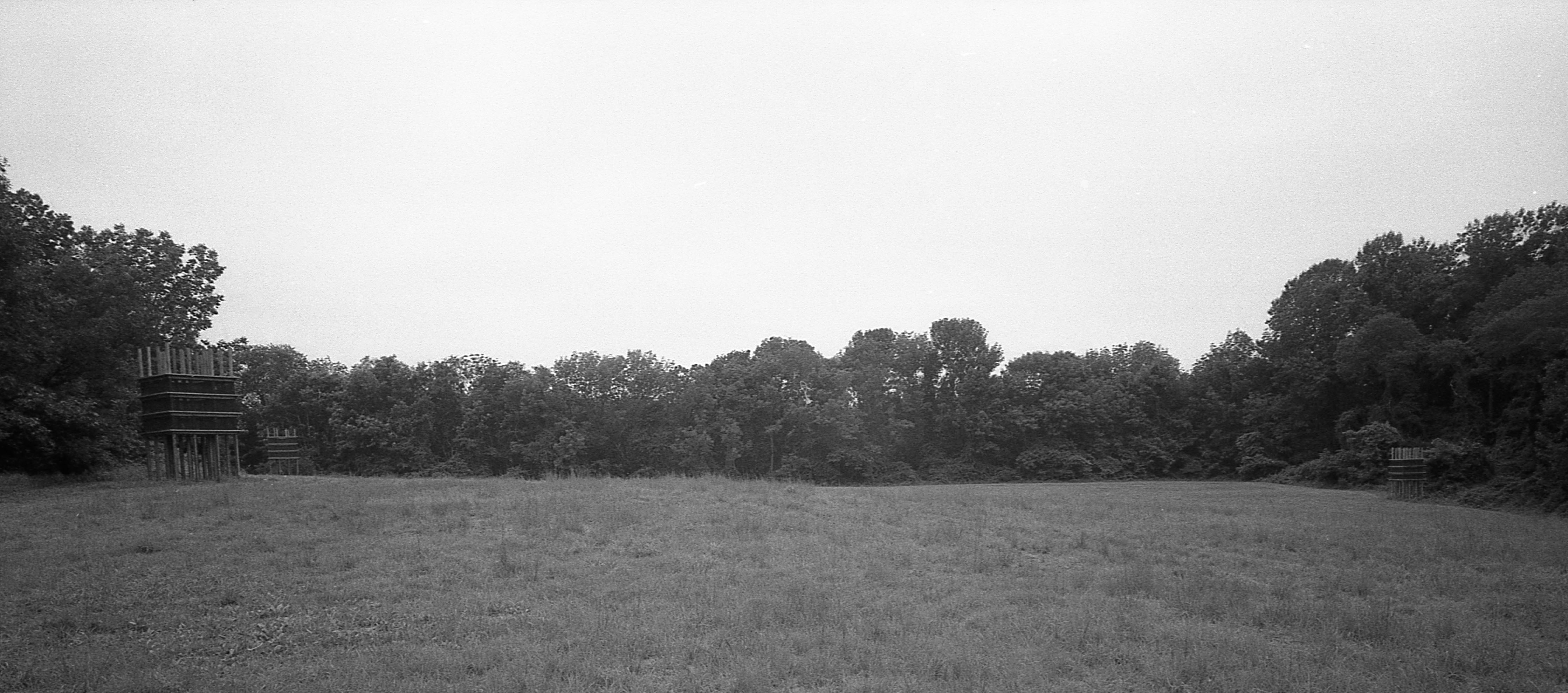Three tower-like structures, two semi-circular mounds, and an underground courtyard, built using vernacular construction techniques and materials are situated within a four acre clearing at the Nassau County Museum. Located on a former estate on Long Island, the Museum is used primarily as a park by local residents. How could this place engage an audience unfamiliar with contemporary art? How could the work be built over such a large area in a way that was compelling in its presence yet did not seem physically imposing?
The route through the temporary piece is unscripted: it is necessary to walk through the entire complex to assemble the parts, draw comparisons, structure the information. Coming through the trees into the field one finds an eighteen-foot high tower made of wood and metal screening. In the distance, at the edge of the clearing, are two additional towers. Together the three seem to have the field ‘staked out.’ As the viewer approaches these structures which are presumed to be the same, their different sizes become apparent. The second is fifteen feet high, while the most distant is only twelve feet high and can barely be entered because of the narrow spacing of the supports. Climbing into one of these towers, it is possible to survey the tree-ringed field from behind the screens rather than being the one observed. Moving through the field it is clear that these structures are not as straight forward as they seem.
Passing through the opening between the earth mounds, which subtly encloses the upper field, a sixteen foot square hole in the ground with a ladder protruding becomes visible. On descending the ladder a large courtyard below is revealed.
Going further back from the overhead opening there is a wall surrounding the court with a door in each side. Behind that wall is a passage which circles the courtyard. In the innermost wall of the passage slot-like windows look into a dark area of undetermined size which is obviously open. The viewer becomes aware that the ground s/he has just walked across and presumed to be solid is undermined. The movement itself becomes important going through the layers of space from light to dark. There is a bodily as well as visual perception of the place. The work makes one unsure of one’s position as boundaries and perceptions of distance are brought into question.





